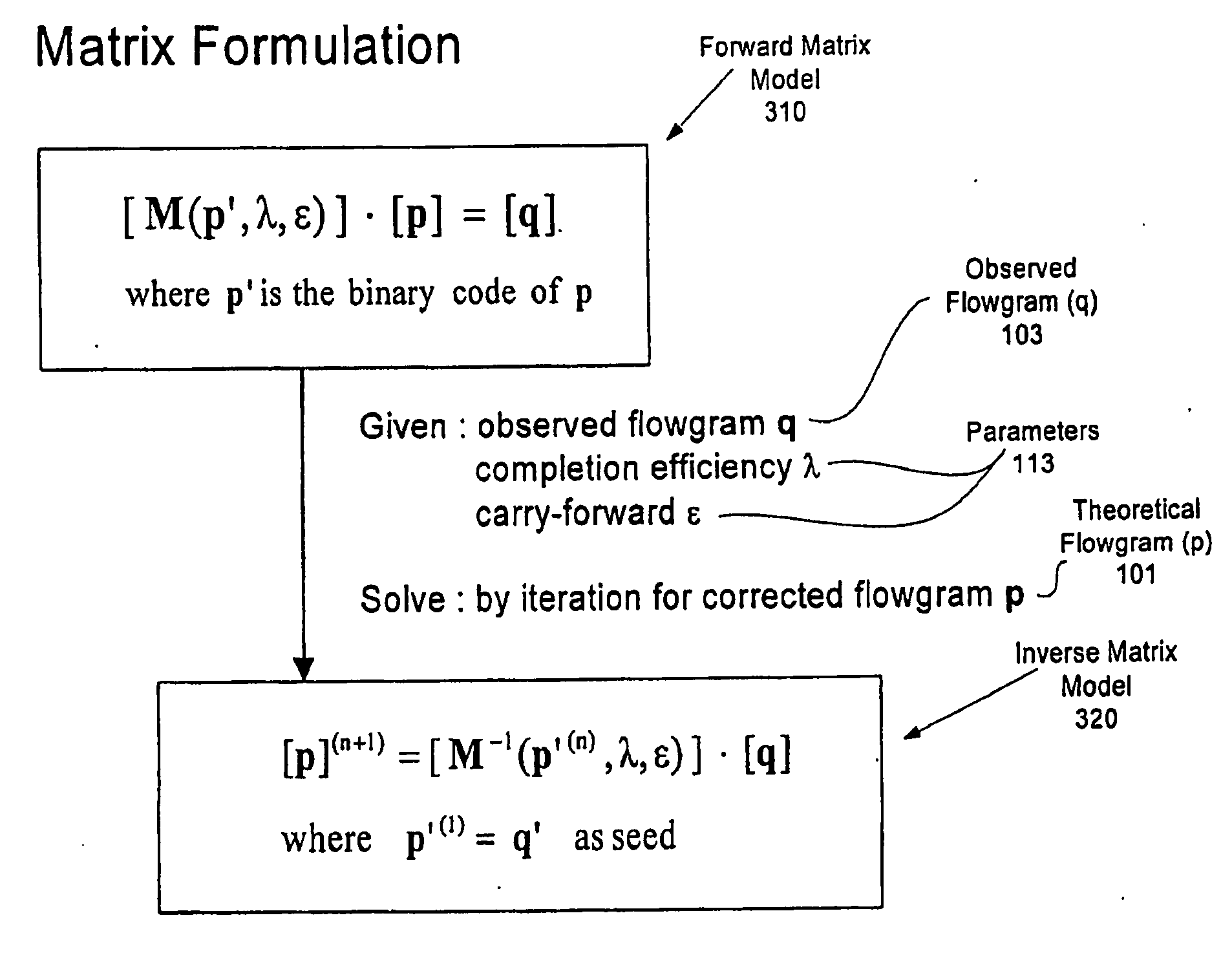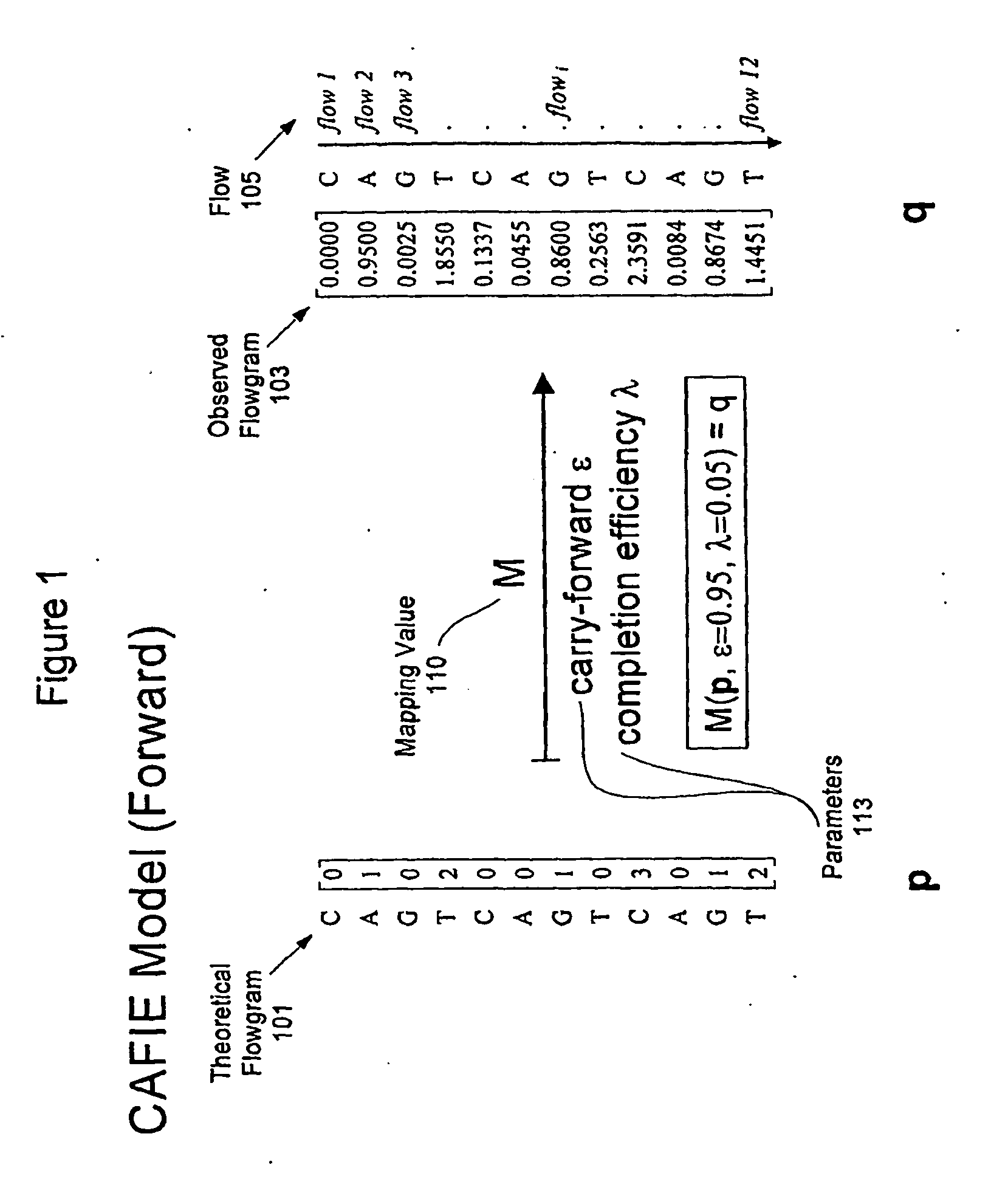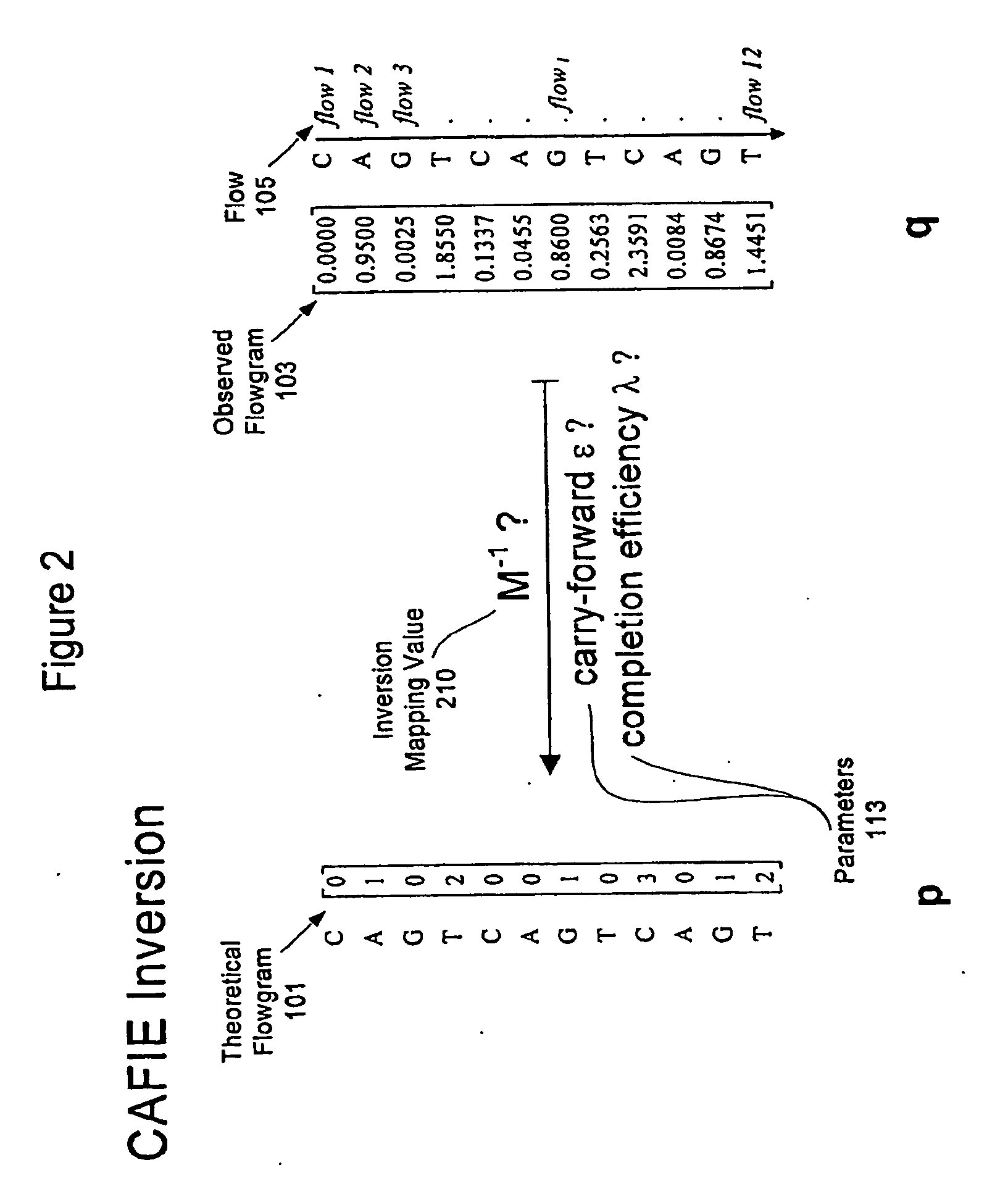System and Method for Correcting Primer Extension Errors in Nucleic Acid Sequence Data
a nucleic acid sequence and primer extension technology, applied in the field of molecular biology, can solve the problems of phasic asynchrony, loss of protecting group, upper limit of length, etc., and achieve the effect of extending the useful sequence read length, reducing the depth of sequence coverage, and increasing the quality of sequence data
- Summary
- Abstract
- Description
- Claims
- Application Information
AI Technical Summary
Benefits of technology
Problems solved by technology
Method used
Image
Examples
example 1
[0125]The genomes of Staphylococcus aureus COL and Mycoplasma genitalium were shotgun sequenced on a 454 Life Sciences Genome Sequencer (Margulies et al., 2005, incorporated by reference above). FIG. 7 provides an illustrative example of the effects of IE correction only and CAFIE correction on genome coverage, correctness of the consensus sequence, medium read length, and percentage of wells having achieved 100% accuracy of read lengths of over 125 sequence positions. By each of these measures, CAFIE correction was superior to IE correction alone. IE correction alone was superior to the results achieved without correction. Beads with control sequences were prepared separately and mixed with the experimental sample prior to preparation of the array.
[0126]Through the use of the above procedures the average read length for a 63-cycle run was increased from 112 sequence positions to 147 sequence positions which is near the theoretical maximum for a 63-cycle or 252 flow iterations (e.g....
PUM
| Property | Measurement | Unit |
|---|---|---|
| sequence composition | aaaaa | aaaaa |
| length | aaaaa | aaaaa |
| nucleic acid | aaaaa | aaaaa |
Abstract
Description
Claims
Application Information
 Login to View More
Login to View More - R&D
- Intellectual Property
- Life Sciences
- Materials
- Tech Scout
- Unparalleled Data Quality
- Higher Quality Content
- 60% Fewer Hallucinations
Browse by: Latest US Patents, China's latest patents, Technical Efficacy Thesaurus, Application Domain, Technology Topic, Popular Technical Reports.
© 2025 PatSnap. All rights reserved.Legal|Privacy policy|Modern Slavery Act Transparency Statement|Sitemap|About US| Contact US: help@patsnap.com



